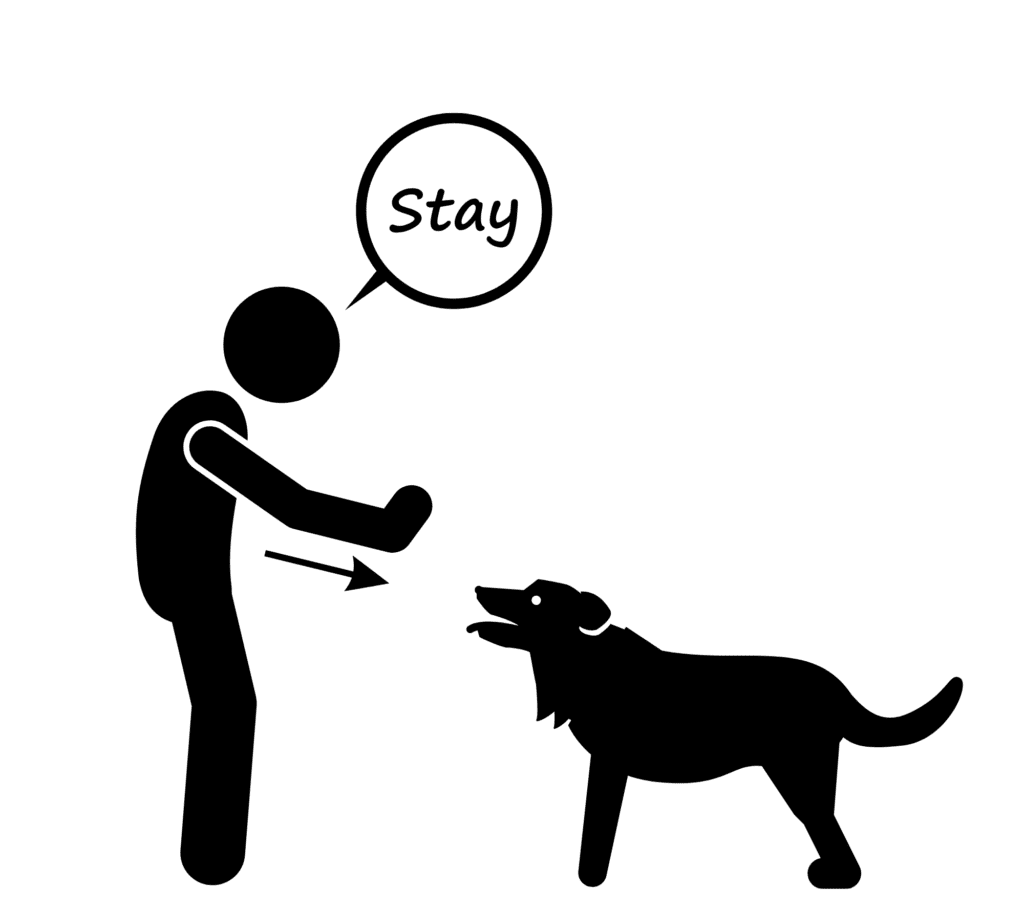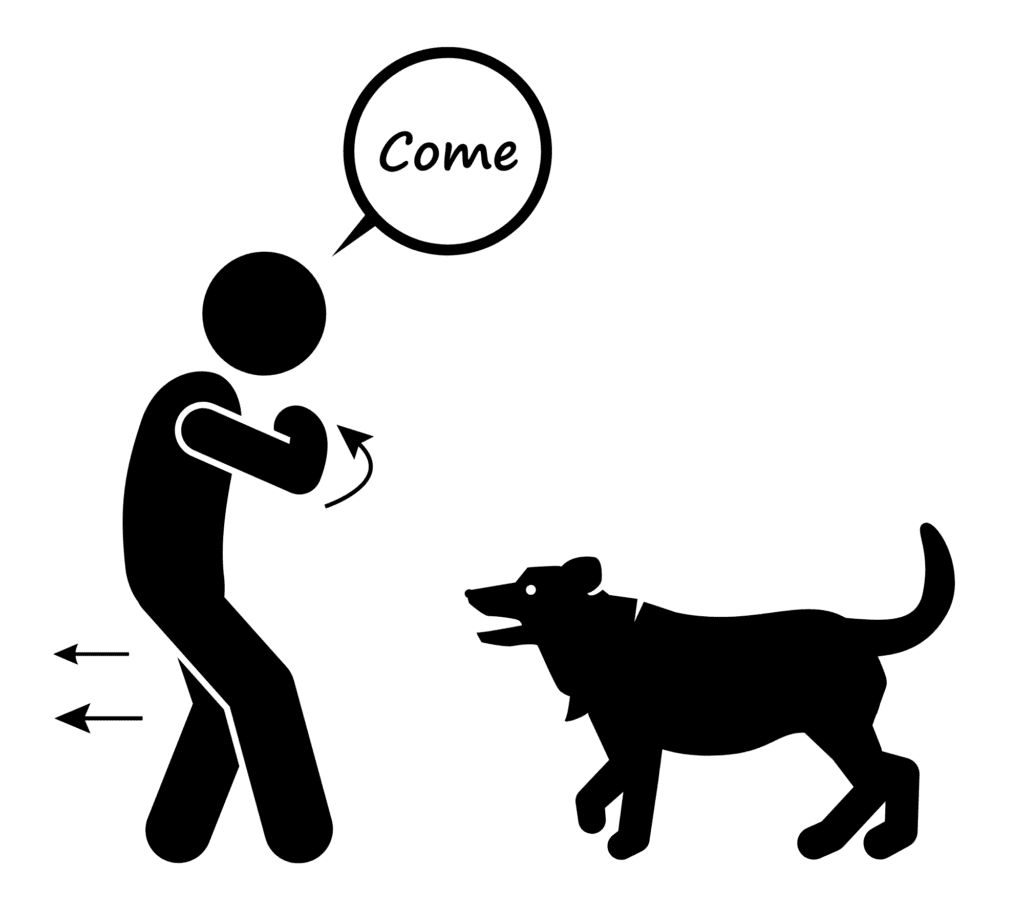Essential Dog Training: From Basic to Expert Techniques
This post may contain affiliate links, which means I’ll receive a commission if you purchase through my link, at NO EXTRA COST TO YOU
Unlock the secrets to effective dog training with our comprehensive guide, “Dog Training Tips & Tricks: From Basic Commands to Advanced Techniques.” Whether you’re a first-time dog owner or a seasoned pet parent, this blog post is packed with essential information to help you train your dog efficiently and humanely. We’ll take you through the foundational commands such as “sit,” “stay,” “come,” and “heel,” and then guide you to more advanced techniques like off-leash training, agility exercises, and behavior correction.
Discover the best practices for positive reinforcement, learn how to use clicker training to your advantage, and find out how to address common behavioral issues such as barking, chewing, and jumping. Our expert tips are designed to strengthen the bond between you and your dog, making training a fun and rewarding experience. With step-by-step instructions, helpful diagrams, and practical examples, this guide is your go-to resource for all things dog training.

Additionally, we provide insights into understanding your dog’s body language and communication signals, ensuring you can respond appropriately to their needs and emotions. Whether your goal is to have a well-mannered pet or a highly trained service dog, our blog post covers everything you need to know to achieve success.
Join us as we explore the fascinating world of dog training, offering tried-and-true tips and tricks that cater to dogs of all ages, breeds, and temperaments. Get ready to transform your dog into a confident, obedient, and happy member of your family with our expert guidance. Read on to discover the ultimate strategies for effective dog training and start your journey towards a better-behaved dog today!
Why Dog Training is Important
Dog training is crucial for fostering a well-behaved, safe, and happy canine companion. Effective dog training goes beyond basic obedience; it builds a strong, healthy relationship between you and your dog. Here are several key reasons why dog training is important:
1. Enhances Safety
Proper dog training ensures your pet responds to essential commands, which is vital for their safety. Commands like “sit,” “stay,” and “come” can prevent your dog from running into traffic or getting lost, keeping them safe in potentially dangerous situations.
2. Improves Behavior
Training helps address and prevent common behavioral issues such as excessive barking, chewing, and jumping. By establishing clear rules and expectations, you can significantly reduce unwanted behaviors and create a more harmonious living environment.

3.Strengthens Bond with Your Dog
Regular training sessions enhance the bond between you and your dog. Positive reinforcement and consistent communication build trust and respect, fostering a stronger, more loving relationship.
4. Promotes Socialization
Training often involves exposure to new environments, people, and other animals, which is essential for proper socialization. A well-socialized dog is more comfortable and confident in various situations, reducing the likelihood of fear or aggression.
5. Provides Mental Stimulation
Dogs need mental challenges to stay happy and healthy. Training exercises engage your dog’s mind, preventing boredom and related behavioral problems. Mental stimulation is as important as physical exercise for a well-balanced dog.
6. Easier Vet Visits and Grooming
A trained dog is easier to manage during vet visits and grooming sessions. Teaching your dog to stay calm and follow commands like “sit” and “stay” can make these experiences less stressful for both of you, ensuring better care and hygiene.
7. Enhances Quality of Life
A well-trained dog enjoys a richer quality of life. They can participate in more activities, safely explore off-leash areas, and experience new adventures. Training opens up a world of opportunities for your dog to enjoy.
8. Reduces Stress and Anxiety
Structured training routines help reduce stress and anxiety in dogs. Consistent training provides a sense of security, as dogs understand what is expected of them and feel more confident in their interactions.
9. Encourages Good Manners
A well-trained dog is more welcome in public places and social settings. Good manners, such as not jumping on guests and walking politely on a leash, make your dog a pleasant companion and a better community member.
10. Foundation for Advanced Training
Basic training lays the groundwork for advanced skills and specialized activities, such as agility, therapy work, or service dog tasks. A strong foundation in obedience is essential for any further training.
Getting Started: Basic Commands
Training your dog in basic commands is the foundation of a well-behaved pet. These commands not only help manage your dog’s behavior but also enhance their safety and your bond with them. Here’s a comprehensive guide to getting started with essential dog commands:
1. Sit
Teaching your dog to sit is one of the simplest and most effective commands. It is the foundation for many other commands and helps manage your dog’s behavior in various situations.

How to Teach: Hold a treat close to your dog’s nose, then move your hand up, allowing their head to follow the treat and causing their bottom to lower. Once they are in a sitting position, say “sit,” give them the treat, and share affection.
Practice: Repeat this several times a day. Once your dog has mastered it, use the command before mealtime, when greeting people, or when approaching a crosswalk.
2. Stay
The “stay” command is crucial for your dog’s safety, keeping them in place until you give them the release cue.

How to Teach: Start with your dog in the sitting position. Open your palm in front of you and say “stay.” Take a few steps back, then return and reward with a treat if they remain in place.
Practice: Gradually increase the distance you move away from your dog before giving the treat. Consistently practice in different environments to strengthen the command.
3. Come
The “come” command helps keep your dog out of trouble and brings them back to you in potentially dangerous situations.

How to Teach: Put a leash and collar on your dog. Get down to their level and say “come” while gently pulling on the leash. When they reach you, reward with a treat and affection.
Practice: Practice this command in a safe, enclosed area. Gradually practice off-leash once they reliably come when called.
4. Heel
The “heel” command ensures your dog walks beside you rather than pulling ahead or lagging behind.

How to Teach: Start with your dog on a leash. Hold the leash and a treat in your left hand. Say “heel” and start walking, keeping the treat close to your dog’s nose. Reward them for staying by your side.
Practice: Consistently practice during daily walks. Gradually increase the length of time your dog is required to heel before giving the treat.
5. Down
The “down” command is useful for calming your dog and ensuring they stay in one place.

How to Teach: Start with your dog sitting. Hold a treat close to their nose, then move your hand to the floor. Your dog will follow the treat into a lying down position. Say “down,” then give the treat.
Practice: Repeat several times daily. Use the command in various settings to reinforce the behavior.
Tips for Success
Consistency: Use the same word and hand signal for each command.
Positive Reinforcement: Always reward your dog with treats, praise, or play when they perform the command correctly.
Short Sessions: Keep training sessions short (5-10 minutes) to maintain your dog’s attention.
Patience: Training takes time. Be patient and persistent, celebrating small successes.
By mastering these basic commands, you lay the groundwork for a well-behaved dog who understands and respects boundaries. Consistent training not only improves your dog’s behavior but also strengthens your bond, making for a happier and safer companionship.

Positive Reinforcement Techniques
Positive reinforcement is one of the most effective and humane methods for training your dog. This technique focuses on rewarding desired behaviors, making your dog more likely to repeat them. Here’s a detailed guide to using positive reinforcement in dog training:
What is Positive Reinforcement?
Positive reinforcement involves giving your dog a reward immediately after they perform a desired behavior. This could be treats, praise, toys, or playtime. The idea is to make the behavior more appealing, encouraging your dog to repeat it.
Benefits of Positive Reinforcement
Builds Trust: Positive reinforcement strengthens the bond between you and your dog, as they associate you with good things.
Encourages Learning: Dogs are more motivated to learn when training is enjoyable and rewarding.
Reduces Fear: This method avoids the fear and anxiety that can come with punishment-based training.
Improves Behavior: Consistently rewarding good behavior helps eliminate unwanted behaviors over time.
Key Positive Reinforcement Techniques
Treats
How to Use: Use small, high-value treats that your dog loves. Give a treat immediately after your dog performs the desired behavior to create a clear association.
Tip: Keep treats handy during training sessions to ensure timely rewards.
Praise and Affection
How to Use: Use a happy, enthusiastic tone to praise your dog, and provide physical affection like petting or belly rubs.
Tip: Combine verbal praise with treats for a more powerful reward.
Clicker Training
How to Use: Use a clicker to mark the exact moment your dog performs the desired behavior, followed by a treat. The click sound acts as a precise marker, making it easier for your dog to understand what they did right.
Tip: Always follow the click with a treat to maintain the association.
Playtime and Toys
How to Use: Use your dog’s favorite toys or play activities as rewards. For example, after a successful training session, reward your dog with a game of fetch or tug-of-war.
Tip: Use playtime as a reward for behaviors that require more effort or focus.
Advanced Training Techniques
Elevate your dog’s skills with advanced training techniques that challenge their mind, enhance their obedience, and improve their physical fitness. Here’s an in-depth look at some advanced training methods:
1. Off-Leash Training
Purpose: Teaches your dog to follow commands without the constraint of a leash, promoting greater freedom and safety.
How to Start: Begin in a secure, enclosed area. Gradually introduce more distractions and practice commands like “come,” “stay,” and “heel” off-leash. Use high-value treats and praise to reinforce good behavior.
2. Agility Training
Purpose: Enhances your dog’s physical fitness and mental sharpness by navigating obstacle courses.
How to Start: Introduce your dog to basic agility equipment like tunnels, jumps, and weave poles. Guide them through each obstacle with treats and positive reinforcement. Consistently practice to improve speed and accuracy.
3. Fetch and Retrieve
Purpose: Strengthens your dog’s natural instincts and provides excellent physical exercise.
How to Start: Use a favorite toy or ball to play fetch. Encourage your dog to bring the item back to you by rewarding them with treats and praise. Gradually increase the distance and complexity of the game.
4. Scent Work
Purpose: Engages your dog’s powerful sense of smell to find hidden objects, enhancing their mental stimulation.
How to Start: Begin with simple scent games by hiding treats or toys and encouraging your dog to find them. Gradually increase the difficulty by using different scents and more challenging hiding spots.
5. Advanced Commands
Purpose: Commands like “place,” “leave it,” and “quiet” improve your dog’s discipline and responsiveness.
How to Start: Teach these commands in a distraction-free environment. Use positive reinforcement to encourage your dog’s success. Practice consistently in various environments to ensure reliability.
Tips for Success with Advanced Training
- Consistency: Regular practice is key to mastering advanced techniques. Keep training sessions consistent and incorporate them into your daily routine.
- Positive Reinforcement: Always use treats, praise, and affection to reward your dog’s efforts. Positive reinforcement strengthens desired behaviors and keeps your dog motivated.
- Patience and Persistence: Advanced training can take time. Be patient and persistent, celebrating small successes along the way.
- Gradual Progression: Start with simpler tasks and gradually increase the difficulty as your dog becomes more proficient.
Addressing Common Behavioral Issues
Effectively addressing common behavioral issues is crucial for a well-behaved and happy dog. Here’s a detailed guide to tackling some of the most frequent problems:
1. Excessive Barking
Solution: Excessive barking can stem from boredom, anxiety, or alertness. Identify the root cause and address it accordingly. Use commands like “quiet” or “enough” and reinforce with treats when your dog stops barking. Ensure your dog receives adequate physical exercise and mental stimulation to reduce boredom.

2. Chewing
Solution: Dogs chew to explore, relieve teething pain, or combat boredom. Provide plenty of chew toys and rotate them regularly to maintain interest. When your dog chews on inappropriate items, redirect them to a suitable toy and reward them for chewing on it. Avoid scolding, as it may cause anxiety and exacerbate the behavior.
3. Jumping on People
Solution: Dogs often jump on people out of excitement or to seek attention. Teach the “off” or “down” command. When your dog jumps, turn away and ignore them until they settle down, then reward them with attention and treats. Consistency from all family members and visitors is key to preventing this behavior.
4. Pulling on the Leash
Solution: Leash pulling can make walks stressful. Teach your dog to “heel” or walk calmly beside you. Stop walking when your dog pulls and resume only when the leash is slack. Use treats and praise to reward your dog for walking correctly. Consider using a no-pull harness for additional control during training.
5. Separation Anxiety
Solution: Separation anxiety can lead to destructive behavior and excessive barking. Gradually desensitize your dog to being alone by starting with short departures and slowly increasing the duration. Provide interactive toys and treat-dispensing puzzles to keep your dog occupied while you’re away. Practice leaving and returning calmly to avoid increasing anxiety.
Tips for Success
- Consistency: Ensure all family members use the same commands and training techniques to avoid confusing your dog.
- Positive Reinforcement: Reward desired behaviors with treats, praise, or playtime to encourage repetition of good behavior.
- Patience and Persistence: Behavioral issues can take time to resolve. Stay patient and persistent, and celebrate small victories along the way.
- Seek Professional Help: If behavioral issues persist, consider consulting a professional dog trainer or a veterinarian to rule out any underlying health issues.
Understanding Your Dog’s Body Language
Understanding your dog’s body language is essential for effective communication and building a strong bond. Dogs communicate their feelings and intentions through their body postures, facial expressions, and vocalizations. Here’s how to interpret some common signals:
1. Tail Wagging
Meaning: A wagging tail can indicate various emotions. A high, stiff wag usually signifies excitement or agitation, while a low, slow wag often means the dog is relaxed or uncertain.
Tip: Pay attention to the speed and position of the wag to better understand your dog’s mood.
2. Ears
Meaning: Erect ears can indicate attentiveness or curiosity, while flattened ears often signify fear or submission.
Tip: Observe the context and other body language cues to accurately interpret ear positions.
3. Eyes
Meaning: Wide, staring eyes can be a sign of alertness or aggression, while soft, blinking eyes typically indicate relaxation and comfort.
Tip: Look for the “whale eye” (when you can see the whites of the eyes), which often means the dog is anxious or stressed.
4. Body Posture
Meaning: A relaxed body with a loose, wiggly stance indicates a happy and comfortable dog. In contrast, a stiff, tense posture can signal fear, aggression, or discomfort.
Tip: Notice changes in posture when introducing new environments or stimuli to gauge your dog’s reaction.
5. Mouth and Teeth
Meaning: A relaxed, slightly open mouth often shows that a dog is calm and happy. Bared teeth, especially with a wrinkled muzzle, typically indicate aggression or fear.
Tip: Combine mouth cues with other signals like growling or lip licking to better understand your dog’s feelings.
6. Paw Lifting
Meaning: Paw lifting can signify anticipation, curiosity, or uncertainty. Some dogs may also lift a paw when they are in a submissive state.
Tip: Observe the situation to determine why your dog is lifting their paw.
7. Yawning and Lip Licking
Meaning: Dogs often yawn or lick their lips when they are stressed, anxious, or trying to calm themselves.
Tip: If you notice these behaviors frequently, assess the environment for potential stressors and try to alleviate them.
Tips for Reading Your Dog’s Body Language
- Observe in Context: Always consider the overall situation and environment. Body language can vary based on context.
- Look for Patterns: Consistent behaviors in similar situations can help you understand your dog’s usual responses and feelings.
- Combine Signals: Don’t rely on a single sign. Combine multiple body language cues for a more accurate interpretation.
- Practice Patience: Learning to read body language takes time. Be patient and observant to become more attuned to your dog’s signals.
Training Different Ages and Breeds
Training techniques can vary significantly based on your dog’s age and breed. Tailoring your approach to fit these specific needs ensures more effective and enjoyable training sessions. Here’s how to adapt your methods for different ages and breeds:
Training Puppies
Focus: Socialization and basic commands.
Tips:
Start with simple commands like “sit,” “stay,” and “come.”
Use positive reinforcement and short, fun sessions to keep their attention.
Introduce them to various people, animals, and environments to build confidence and reduce fear.

Training Adult Dogs
Focus: Reinforcing commands and addressing any behavioral issues.
Tips:
Consistency is key. Maintain regular training sessions to reinforce existing commands.
Use positive reinforcement to correct unwanted behaviors and teach new tricks.
Challenge them with advanced training and agility exercises to keep them mentally stimulated.
Training Senior Dogs
Focus: Gentle reinforcement and mental stimulation.
Tips:
Be patient and adjust the intensity of training sessions to match their physical capabilities.
Use softer treats and more praise as rewards.
Engage them with gentle exercises and puzzle toys to keep their minds active.
Training Specific Breeds
Small Breeds:
Tips: Focus on reducing anxiety and boosting confidence with socialization and gentle handling. Use positive reinforcement to discourage excessive barking and separation anxiety.
Large Breeds:
Tips: Prioritize obedience training to manage their strength and size. Teach commands like “heel” and “down” to ensure they are well-behaved in public.
Working Breeds:
Tips: Provide ample mental and physical stimulation. Incorporate tasks and jobs to satisfy their natural instincts. Agility training, herding, and advanced commands are excellent choices.
Herding Breeds:
Tips: Use activities that mimic their natural herding behaviors. Engage them with agility courses, fetch games, and obedience training to channel their energy positively.
Tips for Successful Training
- Know Your Dog’s Background: Understanding your dog’s breed characteristics and age-specific needs helps tailor your training approach.
- Be Patient: Different ages and breeds learn at different paces. Be patient and adjust your training methods as needed.
- Use Positive Reinforcement: Consistently reward desired behaviors with treats, praise, or playtime to encourage repetition.
- Regular Exercise: Ensure your dog gets enough physical activity to prevent boredom and promote good behavior.
Best Dog Training Books
Conclusion
Training your dog, whether it’s mastering basic commands or advancing to more complex techniques, is a journey that enriches both your lives. Effective dog training not only ensures your furry friend is well-behaved but also strengthens the bond between you and your pet, making your relationship more fulfilling and harmonious.
Consistency is crucial in dog training. Using the same commands and hand signals repeatedly helps your dog understand and remember what is expected of them. Regular practice reinforces these lessons, ensuring they become second nature. Short, frequent training sessions are more effective than long, sporadic ones, keeping your dog engaged and motivated without overwhelming them.
Positive reinforcement is the cornerstone of successful dog training. Rewarding your dog with treats, praise, or playtime for correct behavior encourages them to repeat these actions. Positive reinforcement builds trust and creates a positive learning environment, making your dog eager to learn and please. Avoiding punishment is equally important, as it can lead to fear, anxiety, and a breakdown in the bond you share.
Patience and persistence are vital. Every dog learns at their own pace, and some may take longer to grasp certain commands or techniques. It’s important to remain patient and persistent, celebrating small victories along the way. Each step forward, no matter how small, is a step towards a well-trained and confident dog.
Socialization is another key aspect of dog training. Exposing your dog to different environments, people, and other animals helps build their confidence and reduces fear and anxiety. A well-socialized dog is more adaptable and less likely to develop behavioral issues.
From teaching basic commands like “Sit” and “Stay” to advanced techniques such as agility training, each aspect of dog training plays a significant role in your dog’s overall development. Basic commands ensure your dog can follow essential instructions, enhancing their safety and your control in various situations. Advanced training challenges your dog’s mind and body, providing essential mental stimulation and physical exercise.
Remember, dog training is an ongoing process. Even after your dog has mastered certain commands, regular practice and continued training help maintain these skills and introduce new ones. Training is not just about obedience but also about keeping your dog mentally and physically stimulated.
In conclusion, successful dog training requires consistency, positive reinforcement, patience, and regular practice. By following these tips and incorporating both basic and advanced training techniques, you can ensure your dog is well-behaved, happy, and mentally stimulated. The effort you invest in training your dog will pay off with a loyal, well-mannered companion who enriches your life in countless ways. Happy training, and enjoy the rewarding journey of teaching and learning with your canine friend!
























